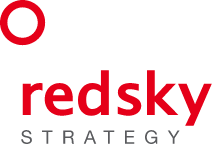News
How Lean Market Sizing Can Lead to Innovation Research

Image credit: https://unsplash.com/photos/vbxyFxlgpjM
Imagine you’re running the grill at a summer backyard BBQ and need to find out how many hot dogs each attendee wants. You’re busy grilling, so you can’t go around to all 60 people spread out across the back yard, the pool, and the patio. Counting hot dog orders would take longer than the actual grilling!
Instead, you crack open one pack of 10 hot dogs and grill them up perfectly. After nestling them into toasted buns on a stack of paper plates, you approach different groups of partygoers with your bounty. Your chef skills and sales magic work wonders, as all 10 hot dogs are snapped up quickly after talking to only 12 people. That gives us a rate of 10 hot dogs per 12 people – so for the remaining 48 guests, you’ll need… 40 hot dogs.
This is the concept behind lean market sizing; we find out how many respondents we have to survey in order to find 100 who like the idea.
In the business of innovation, there is rarely the time and resources to go around to every metaphorical party guest and ask what they’d like. Brands are often testing so many ideas in so little time that it’s not feasible to use traditional methods. Conducting large enough studies of every potential new product to launch or new market to enter would exhaust research budgets quickly and be an ineffective use of time.
What is a Lean Market Sizing Approach?
The lean market sizing approach is based on the principle of seeking out the simplest and most efficient way to achieve a desired result. This means that instead of using complex models and extensive data collection, we rely on a more streamlined process that can be completed with fewer resources.
The lean market sizing approach is made up of three main steps:
-
- Define the problem you’re trying to solve
- Identify your target market
- Estimate the size of your target market
The lean market sizing methodology was first developed by Eric Ries, author of The Lean Startup. Ries adapted the lean manufacturing philosophy to the startup environment and argued that startups need to focus on their customers and delivering value quickly, rather than spending time and money on developing complicated business plans.
How Does the Lean Market Sizing Approach Work?
Brands design a brief questionnaire that includes demographic questions and innovation concepts. The demographics allow you to ensure that you’re getting a representative sample for analysis.
Next, you can work with a research panel supplier to set up a nationally representative pre-screened group of respondents (i.e., 500 of them). You have a representative group of 500 respondents start taking the survey, and then screen out those who are not interested in the concept. If this nets fewer than the target number of interested respondents (i.e., 100), you repeat the process until we reach that target.
You can then use U.S. census and survey termination data to estimate the total market size for the innovation concept being tested. Finally, you can use the rest of the data gathered in the questionnaire to profile the interested people.
When Should You Use Lean Marketing Sizing?
The lean market sizing approach is a useful tool for startups because it helps them to focus on their customers and deliver value quickly. But it can also be used by larger businesses when you’re looking to enter new markets or launch new products. The key to successful lean market sizing is to start with a clear understanding of the problem you are trying to solve and then focus on your target market.
Some of the most common situations where lean market sizing can be useful are when you’re:
- Launching a new product or service and need to estimate the size of the potential market
- Entering a new market and need to understand the needs of your target market
- Looking to re-launch an existing product or service and need to update your market analysis
It can also work when you’re exploring a new partnership or raising money to do any of the above. Market sizing allows you to foresee (and sell) future traction.
The traditional approach to market sizing typically involves developing a detailed business plan, conducting market research, and building complex models. While this might be sufficient for businesses with a lot of resources and time to invest in their market analysis, it’s not ideal for startups or businesses looking to enter new markets quickly.
It’s important to understand that it IS possible to predict how many people will be interested in your innovation – without the burden of lengthy, complicated, or expensive processes. Lean marketing sizing offers a faster, cheaper, quicker, and more flexible solution.
Are you interested in working with RedSky Strategy? We look forward to working with you to implement strategic planning and lean marketing sizing models to better understand your target market.
